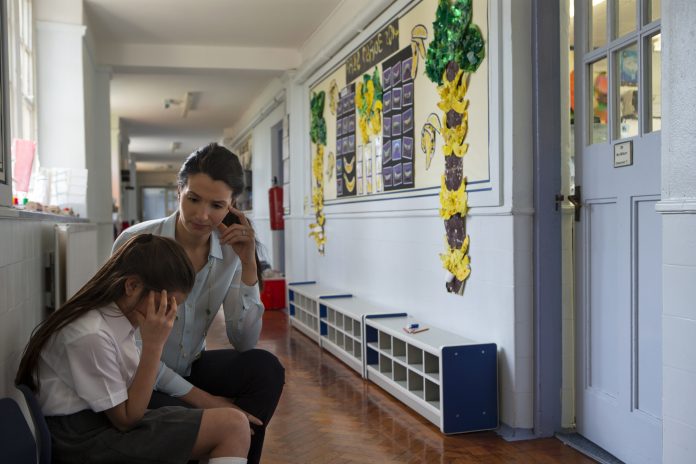Ben Levinson, OBE, headteacher at Kensington Primary School, shares his thoughts on why mental health should have a positive focus the way physical health does
It’s 3.30pm on Tuesday. Time for your weekly SLT meeting, and this week, you’re talking all things physical health. What do you envision will be the topics of discussion?
Perhaps you’ll focus on the impact of lockdowns on pupils’ nutritional health and you’ll look at changing your catering provider.
You might take a deep dive into your current PE curriculum and set targets for having outstanding PE lessons. Perhaps discussions on PE budgets lead to debates on whether you can bring in some energetic new coaches to teach breakdancing to your otherwise disinterested year 6 pupils.
What’s the common theme here? Positivity, in my opinion
Physical education has historically taken the route of constructive solutions. We talk about prevention and we talk about positive approaches to tackling challenging issues because as teachers, we’re problem solvers by nature. Many of us would feel confident in offering suggestions to help the situation.
Could the same be said, though, of our approach to mental health in our schools?
Far too often our response to mental health is reactive. We support our students – and staff too – once a problem is already embedded and the individual is already suffering. We talk about counselling, and CAMHS involvement – but could more have been done, earlier?
Whether it’s a lack of support, funding, training, or just being at a loss to know what solutions could help, there’s a gap.
My school has been working hard to try and fill this gap and I wanted to share what we’re doing to make changes.
How did we get to these stigmas around mental health?
Narratives around mental health, often focus on reaching out for help and challenging mental health stigmas. Mental health is an ailment to be fixed, rather than a fundamental part of being human. How then, might we work to flip the narrative, and make it as widely accepted and promoted as our physical health?
At Kensington Primary School, we ensure that the promotion of mental wellbeing permeates the curriculum, and is a vital part of our school values. We’ve taken advantage of some brilliant guidance from Public Health England and the DFE in their document Promoting Children and Young People’s Mental Health and Wellbeing guidance, which highlights eight key areas to concentrate on to create a positive mental health culture. Here are some of our key takeaways from our experience in applying it.
Permeating the curriculum
We make mental wellbeing the utmost priority when we plan our curriculum. In Literacy, we’ll encourage our staff to talk about the emotional wellbeing of characters in books. In Science, the functioning of the mind is treated with the same level of importance as the functioning of the body. In our History lessons, we’ll cover the emotional impact of world events on historical figures.
Mental health permeates our lives deeply so our teaching should reflect that. Making mental health something that is as commonly spoken about as what we’re having for dinner that day makes it something more easily shared and removes the negative connotations. Students are more willing to share their feelings before they escalate into something that requires more intensive support.

Removing stress
It goes beyond the content of our lesson planning though. We consider the wellbeing of staff and students when we plan our assessments, too.
We know all too well that excessive assessments, both for students and staff, make individuals feel like a cog in the machine. So, we limit assessments. We focus on formative assessments that our staff can carry out in the day-to-day classroom environment.
In addition, we don’t do book scrutinies, learning walks or lesson observations and instead trust that our staff know what they’re doing, because this promotes a safe, welcoming space where staff feel valued.
Knowing the red flags
When we create a whole school environment that respects emotional wellbeing as it does physical health, we help develop emotionally literate pupils who are better prepared to articulate what they’re feeling. Equally, staff that are regularly talking about emotional wellbeing are far more likely to feel open enough to discuss lower-level struggles before they escalate.
We accept we can’t prevent all mental health issues and crises will happen. Instead, our focus is to know the red flags that a staff member or a student is struggling with before the problem is exacerbated. This comes from working on strong relationships across teams, and between senior leaders.
It might be that the EYFS lead has started biting their nails again. Perhaps the science lead hasn’t been sharing all their exciting Pinterest ideas in the staff room at lunch like usual. Maybe the usually beautiful displays over in year 4 are looking a bit worse for wear.
These red flags come up for pupils, too.
Perhaps pupils are struggling with their behaviour more or aren’t reacting well to a change in the TAs in their class. Perhaps a child that took real pride in their handwriting doesn’t seem all that bothered anymore.
These could be isolated issues or signs that someone is struggling so we should not be afraid to engage in a supportive way.
Mental health leads
Children’s mental health is only lightly touched on in teacher training so we could all do with brushing up. But we only have so much time in our school day, so I advocate schools appoint a specific mental health lead, in the same way, we have a literacy or PE lead.
A member of our team signed up to train with the Carnegie Centre of Excellence for Mental Health in Schools, from Leeds Beckett University’s Carnegie School of Education for this purpose. The government has recognised this as a priority too and has earmarked funding which aims to increase the number of such mental health leads in schools.
Mental health leads can make sure the curriculum stays focused on emotional wellbeing and suggest ways to adjust our operations at crunch times, like the idea of redeploying TAs when national exams are coming up to support staff and students.
They act as a checkpoint and keep us firmly on track with our strategy for supporting mental health proactively, not reactively.
With an ethos of support, our school community can openly talk about what they find hard so we can help them before it gets worse.
Read here for more information on senior mental health lead training with the Carnegie Centre of Excellence for mental health in schools











